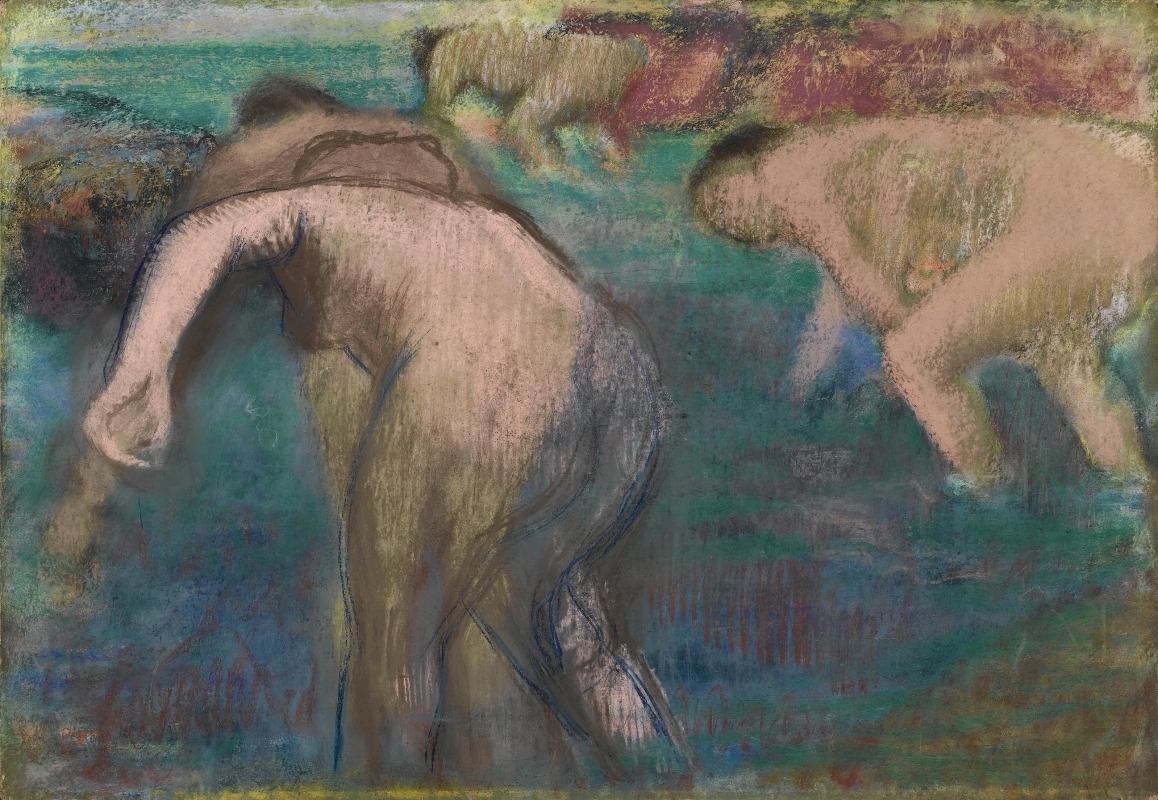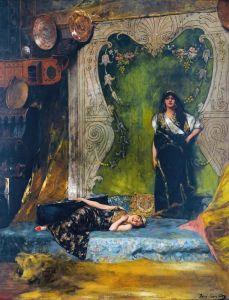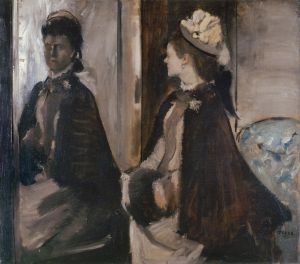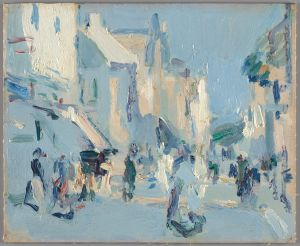
Femmes au bain
A hand-painted replica of Edgar Degas’s masterpiece Femmes au bain, meticulously crafted by professional artists to capture the true essence of the original. Each piece is created with museum-quality canvas and rare mineral pigments, carefully painted by experienced artists with delicate brushstrokes and rich, layered colors to perfectly recreate the texture of the original artwork. Unlike machine-printed reproductions, this hand-painted version brings the painting to life, infused with the artist’s emotions and skill in every stroke. Whether for personal collection or home decoration, it instantly elevates the artistic atmosphere of any space.
"Femmes au bain" (Women at the Bath) is a painting by the renowned French artist Edgar Degas, who is widely celebrated for his contributions to the Impressionist movement, although he preferred to be associated with Realism. Degas is best known for his depictions of dancers, women at work, and intimate scenes of women in private settings, such as bathing. His works often explore the human form and movement, capturing moments of everyday life with a keen observational eye.
"Femmes au bain" is part of Degas's series of works that focus on women in the act of bathing, a subject he explored extensively in the latter part of his career. These works are notable for their candid portrayal of women in private, unguarded moments, offering a glimpse into the personal and often unseen aspects of their lives. Degas's approach to these scenes was both intimate and respectful, capturing the natural beauty and grace of the female form without idealization.
Degas employed a variety of media in his exploration of this theme, including oil paints, pastels, and charcoal. His technique often involved layering colors and using bold, expressive strokes to convey texture and depth. In "Femmes au bain," as in many of his other works, Degas's use of light and shadow plays a crucial role in creating a sense of volume and space, enhancing the realism of the scene.
The composition of "Femmes au bain" reflects Degas's interest in unconventional perspectives and cropping, influenced by the advent of photography and Japanese prints. This approach allowed him to create dynamic compositions that draw the viewer's eye into the scene, emphasizing the natural, unposed quality of the moment. The figures in the painting are often depicted in mid-action, adding a sense of movement and immediacy.
Degas's portrayal of women in these intimate settings was groundbreaking at the time, challenging traditional representations of the female nude in art. Rather than idealizing his subjects, Degas presented them as real women, engaged in everyday activities. This approach was both innovative and controversial, as it defied the norms of academic art and offered a more modern, realistic depiction of women.
"Femmes au bain" and similar works by Degas have been praised for their technical mastery and insightful portrayal of the human condition. They continue to be studied and admired for their contribution to the development of modern art, influencing subsequent generations of artists who sought to capture the essence of contemporary life.
Degas's work remains a significant part of art history, and "Femmes au bain" exemplifies his skill in capturing the subtleties of human form and movement. His ability to convey the beauty and complexity of everyday moments has secured his place as one of the most important artists of the 19th century.


















